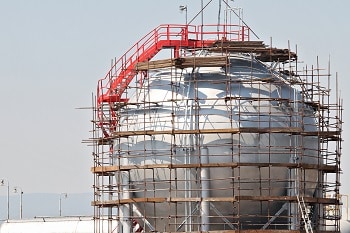Comprehensive Overview to Tank Welding Inspection for Safety and Quality
Comprehensive Overview to Tank Welding Inspection for Safety and Quality
Blog Article
An In-depth Overview of Storage Tank Welding Evaluation Requirements and Methodologies for Improved Weld High Quality and Efficiency
The significance of welding evaluation requirements in the production of storage tanks can not be overstated, as they offer as the backbone for ensuring weld honesty and operational integrity. Various assessment strategies, consisting of aesthetic evaluations and progressed non-destructive screening approaches, are essential in recognizing possible imperfections that can endanger efficiency. Moreover, sticking to governing standards not only enhances weld quality but also mitigates the risk of costly failings. As we check out the nuances of these approaches, it becomes vital to think about exactly how an organized method can change current practices and result in significant renovations in results.
Value of Welding Assessment Standards

Welding evaluation criteria encompass a variety of requirements, including material specifications, welding procedures, and qualifications of personnel associated with the welding process. By implementing these requirements, organizations can systematically identify and rectify potential issues, thereby reducing the likelihood of costly repair work or disastrous failings. Furthermore, rigorous assessment techniques foster a society of accountability and accuracy, urging welders to preserve high degrees of craftsmanship.

Common Welding Examination Methods


Ultrasonic Testing (UT) is one more widespread strategy, using high-frequency acoustic waves to spot internal imperfections that might not show up externally. This approach is particularly efficient for determining spaces or additions within the weld metal. Magnetic Fragment Evaluating (MT) is also widely used, specifically for ferromagnetic products, as it discloses surface area and near-surface problems with the application of magnetic fields and ferrous particles.
Additionally, Fluid Penetrant Screening (PT) finds surface-breaking flaws by applying a penetrant to the weld and afterwards making use of a programmer to extract the penetrant. Each of these strategies adds to an extensive inspection method, making certain that welds meet the strict high quality criteria needed in container building and construction.
Regulative Criteria and Conformity
Regulative criteria and conformity are important parts in making sure the security and reliability of bonded structures in tank building and construction - Tank Welding Inspection. These standards a knockout post offer to develop minimum requirements for product residential properties, welding procedures, and examination practices, consequently reducing the danger of structural failures and enhancing general efficiency
Key organizations, such as the American Culture of Mechanical Designers (ASME) and the American Welding Society (AWS), provide standards that are extensively taken on in the sector. Conformity with these standards not only ensures adherence to best methods but additionally meets legal and legal responsibilities, safeguarding the passions of stakeholders.
Governing bodies frequently mandate adherence to certain codes, such as ASME Code Area IX for welding qualifications and API 650 for bonded containers. These codes outline demands for welding methods, qualifications of employees, and testing techniques to confirm weld honesty.
Routine audits and evaluations are essential to preserving compliance, as they help identify deviations from established standards. Non-compliance can cause considerable penalties, project delays, and safety and security hazards. Thus, a robust understanding of regulatory criteria and a dedication to compliance are extremely important in accomplishing top quality and resilient welded storage tank structures.
Non-Destructive Evaluating Techniques
Exactly how can the stability of welded structures be guaranteed without causing damage? Non-destructive testing (NDT) approaches use a durable option, allowing examiners to assess weld quality without endangering the product - Tank Welding Inspection. Among one of the most usual NDT techniques are ultrasonic testing (UT), radiographic screening (RT), magnetic bit testing (MT), and dye penetrant screening (PT)
Ultrasonic screening employs high-frequency sound waves to find inner problems and characterize product residential or commercial properties. It supplies exact measurements and is particularly effective for thick materials. Radiographic screening includes passing X-rays or gamma rays with the visit this site right here weld, creating photos that reveal structural problems such as fractures or spaces. This method is invaluable for analyzing the stability of complex welds.
Magnetic bit testing is fit for ferromagnetic materials, where electromagnetic fields reveal surface and near-surface discontinuities. Color penetrant testing uses a liquid dye to highlight surface-breaking problems, making it an effective technique for non-porous products.
Each of these NDT techniques has distinctive benefits, enabling detailed evaluations tailored to particular materials and welding procedures. By applying these methods, markets can ensure the dependability and safety of welded frameworks, ultimately enhancing total performance.
Enhancing Weld High Quality With Examination
Effective inspection plays a critical function in improving weld high quality, offering as an important checkpoint in the fabrication procedure. By identifying prospective flaws early, examinations mitigate the risk of jeopardized architectural stability and guarantee compliance with industry standards. Utilizing a mix of visual exams, non-destructive screening (NDT) approaches, and mechanical evaluations, assessors can identify problems such as porosity, cracks, and insufficient combination.
Applying a robust examination method not only boosts official website the general high quality of welds yet likewise promotes a culture of responsibility among welders and fabricators. Regular training and certification of evaluation workers ensure that they are furnished with the essential skills to acknowledge and resolve potential issues properly. This proactive technique decreases rework and associated costs, ultimately adding to forecast effectiveness.
Additionally, detailed documents of inspection findings supplies beneficial understandings into repeating problems, assisting in continual renovation in welding practices. By leveraging innovative innovations, such as automated ultrasonic testing or electronic radiography, weld high quality can be improved via much more exact examinations. In verdict, a strenuous inspection process is essential in achieving premium welds, guaranteeing safety and security, dependability, and long life in storage tank manufacture.
Conclusion
In final thought, the implementation of rigorous container welding examination criteria and methodologies is vital for making sure weld honesty and efficiency. By making use of a mix of aesthetic inspections, non-destructive screening methods, and adherence to governing standards, companies can properly recognize and minimize possible issues.
Report this page